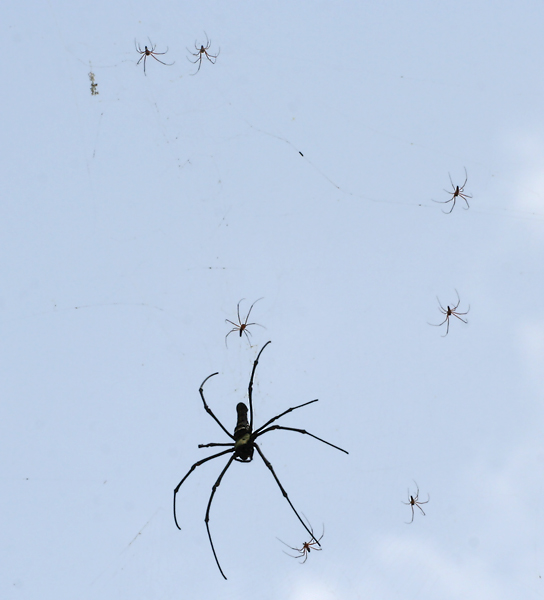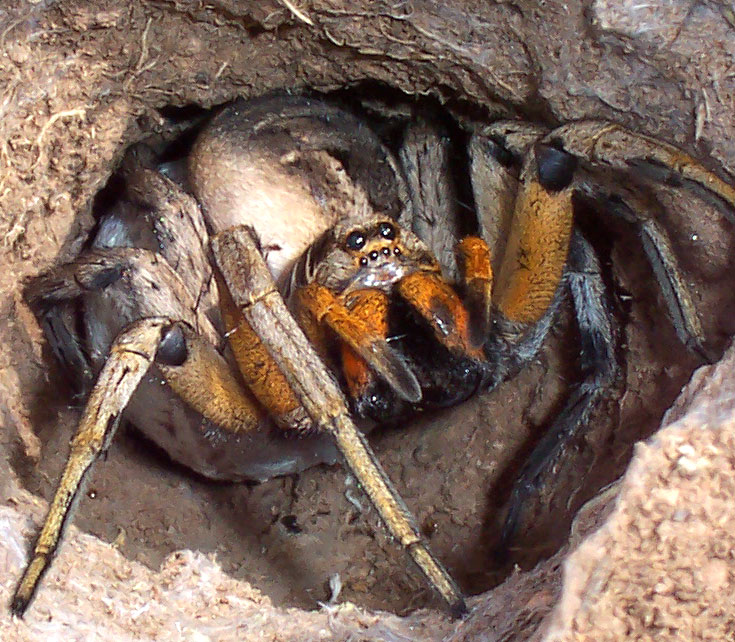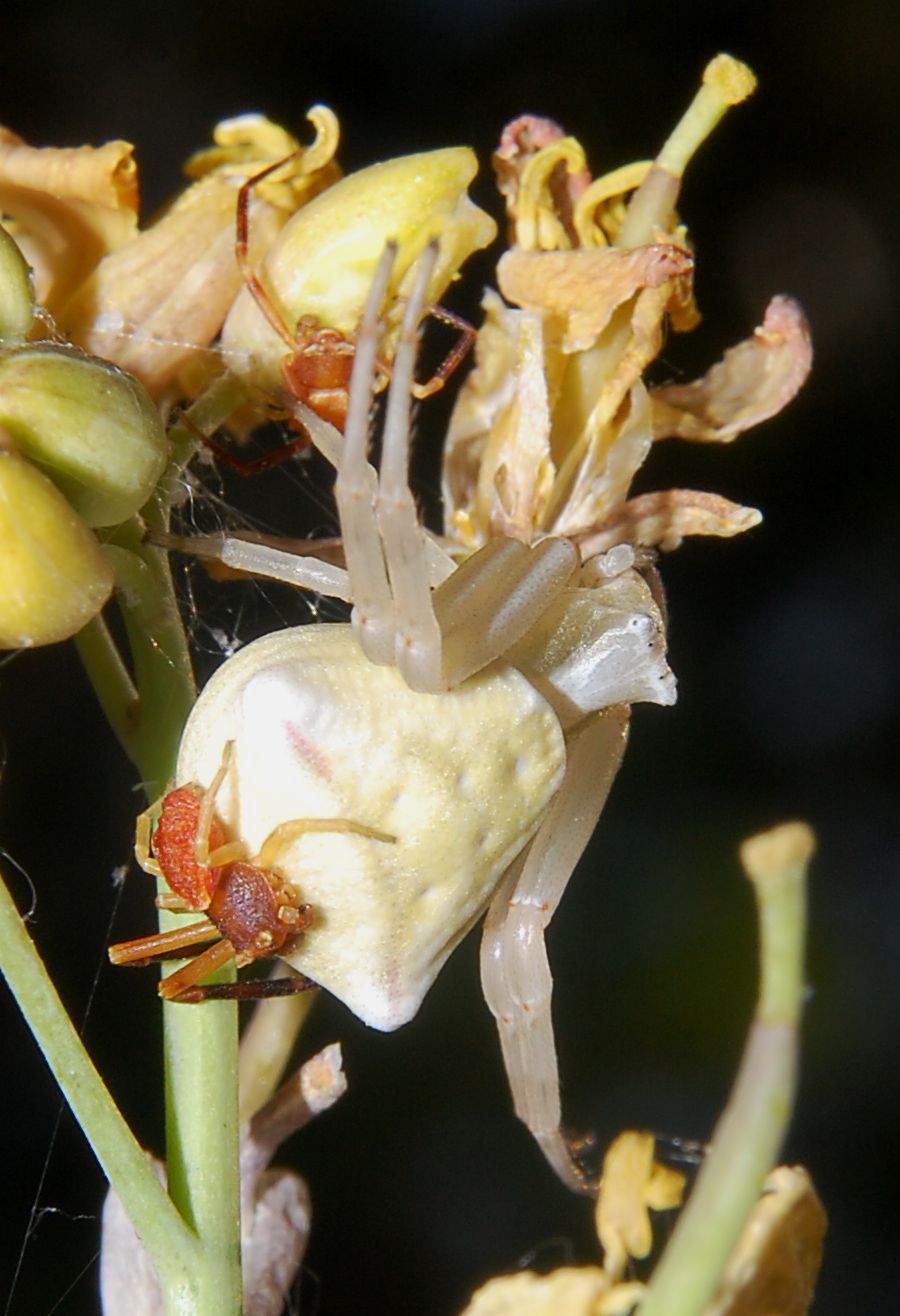by Dr. Boris Zakharov
ABOUT THE AUTHOR

Dr. Boris Zakharov
Professor Boris Zakharov began his professional career in the “Kedrovaya Pad Natural Reserve” (Far East State University, Vladivostok, Russia) as a research scientist, where he participated in and performed various scientific projects in field zoology. Dr. Zakharov's Doctoral research was on horse flies (Diptera, Tabanidae), beginning in 1983 at Novosibirsk Biological Institute. The results of this study were published in his papers and concern systematics, ecology, biogeography and cattle protection from blood sucking diptera in Siberia.
After his arrival in the United States, Dr. Zakharov participated in a project on ground spiders of Australia and New Zealand in the American Museum of Natural History, where he has worked from 1996 to 2005 as a Curatorial Assistant in the Spider laboratory in a Department of Invertebrate Zoology. Currently, he occupies the position of a visiting scientist at the American Museum of Natural History, where he continues the study of ground spiders of the world.
Professor Boris Zakharov began to teach in 2005 at Hostos Community College/CUNY. Boris joined the Natural Sciences department at LaGuardia in 2009.
Sexual dimorphism is a phenomenon widely distributed across the animal kingdom. It consists in morphological differences between males and females of the same species. This phenomenon concerns not only differences in reproductive organs, but also other cumulative morphological features called secondary sexual characteristics. These secondary characteristics often include the presence of additional external structures, which increase success in mating and, as a result, facilitate the ability to produce offspring.
Among spiders, there is a great diversity in body size between males and females: from males and females being practically the same size to cases with giant females and dwarf males. In this paper, the author discusses the natural selection forces that lead to the evolutionary development of these differences. He concludes that there is an interplay of at least a few driving forces that result in the development of sexual body size dimorphism in spiders. The author also emphasizes that every particular case of body size dimorphism should be analyzed individually.
Sexual size dimorphism is well known most animals. First of all, it means different size among male and female body, but also may include difference in body parts usually used in fight or courtship, such as horns or sophisticated ornamentation in males. In spiders, sexual dimorphism often one can see, when compare big bulky females with smaller and often fragile males of the same species. Usually, spider males are 10-20% smaller than females with longer legs (Fig. 1).
A number of hypotheses have been proposed to explain this phenomenon:
We know, that in general, spider females are larger. They perform many important functions, which require more physical strength and energy to build a web and guarantee brood survival, whereas male role is reduced to mating. The most spectacular cases of sexual size dimorphism occur in the orb-weaving spiders, where dwarf male can be 10 times smaller and 100 times lighter than female (Fig. 2). This hypothesis has also very strong support from the fact that ground-dwelling spiders in general have much less pronounced sexual size dimorphism, if at all.

Figure 2. Giant Wood spider Nephila pilipes female with many dwarf males. Image credit: J.M.Garg, CC BY 3.0, via Wikimedia Commons.
On the other hand, there are many examples among orb-weaving spiders where females are the same or almost the same size as their males. This diversity in difference male and female body sizes among different species is explained by selection on female fecundity (the potential reproductive capacity of the female). In this case, selection is favorable to females of bigger size with higher number of produced offspring. With the high level of juvenile mortality, the production of larger numbers of offspring is critical for species survival. Additional factor here is that larger fecund females may be more attractive to males as mates. Thus, female gigantism may result from more than one mechanism, which may be a balanced mixture of sexual, fecundity, and natural selections. Although fecundity selection is a common explanation for larger females, it may be disputed by the fact that growth of larger female size takes more time and energy, and, as a result, increases threat to be killed, i.e., decreases survival. Thus, to understand reasons of giant body size of female, both survival and fecundity have to be taken in consideration.
Good fortune favors the males that arrive first. To become such a lucky guy, male has to have high growth rate and maturate faster. The advantage, thus, is not in a small size itself as in the shorter development of male from egg to a mature individual. And really, spider males have fewer molts than females. Besides that, predacious spiders have to live in populations with lower density avoid cannibalism. As a rule, spider females have a sedentary life style, whereas males are roaming in female’s search, which leads to their higher mortality level. The result of this male high mortality is comparatively large number of adult females in population, which reduces competition among males. This hypothesis allows make a prediction as about reason of reduction male body size as relative sizes of the both sexes.
The hypothesis of differential mortality predicts that sedentary spiders should have more pronounced sexual body size dimorphism than actively hunting roaming species, and there are number of remarkable examples that support it. For example, among some tarantulas and large burrowing wolf-spiders there are a true dwarf male. Especially it concerns sedentary species that live in extremal habitats characterized by high seasonal aridity, extreme summer temperatures, or periodic flooding. In such circumstances, the burrowing females are safe in their burrows and les at risk than roaming males. In this situation the reduction of male body size may be a major adaptation that allows them survive and leave their posterity (Fig. 3). However, this model also cannot be always fulfilled.

Figure 3. Sedentary female of wolf-spider in her burrow. Image credit: Author unknown, CC BY 3.0, via Wikimedia Commons.
Differences in body size of adult spiders can be developed by two ways: 1) growth rate and 2) growth duration. In spiders, the size of adults mainly depends on growth duration. For example, male of the crab spider Thomisus onustus maturate after 3-5 molts, whereas females maturate after 6-9 molts. As a result, the sexes demonstrate very high level of body size dimorphism (Fig. 4). There is great variability in number of molts, developmental rate, juvenile survival, adult size and fecundity, even within single spider species. The range of this variability is genetically determined, but its expression increases under stress and hard environmental factors. For example, spider growth depends on temperature and food availability. In the burrowing wolf-spiders Lycosa tarantula, males that experience food shortage demonstrate a significant sexual body size dimorphism and grow much smaller than females. At the same time, a well-feed males of the same species grow the same or almost the same size as their females.

Figure 4. Crab spider Thomisus onustus. Female with two dwarf males. Image credit: Accipiter (R. Altenkamp, Berlin), CC BY-SA, via Wikimedia Commons.
In summary, the extreme sexual body size dimorphism in spiders is the final result of a complex interplay of various factors. No single hypothesis can completely explain this phenomenon and every particular case requires individual explanation.